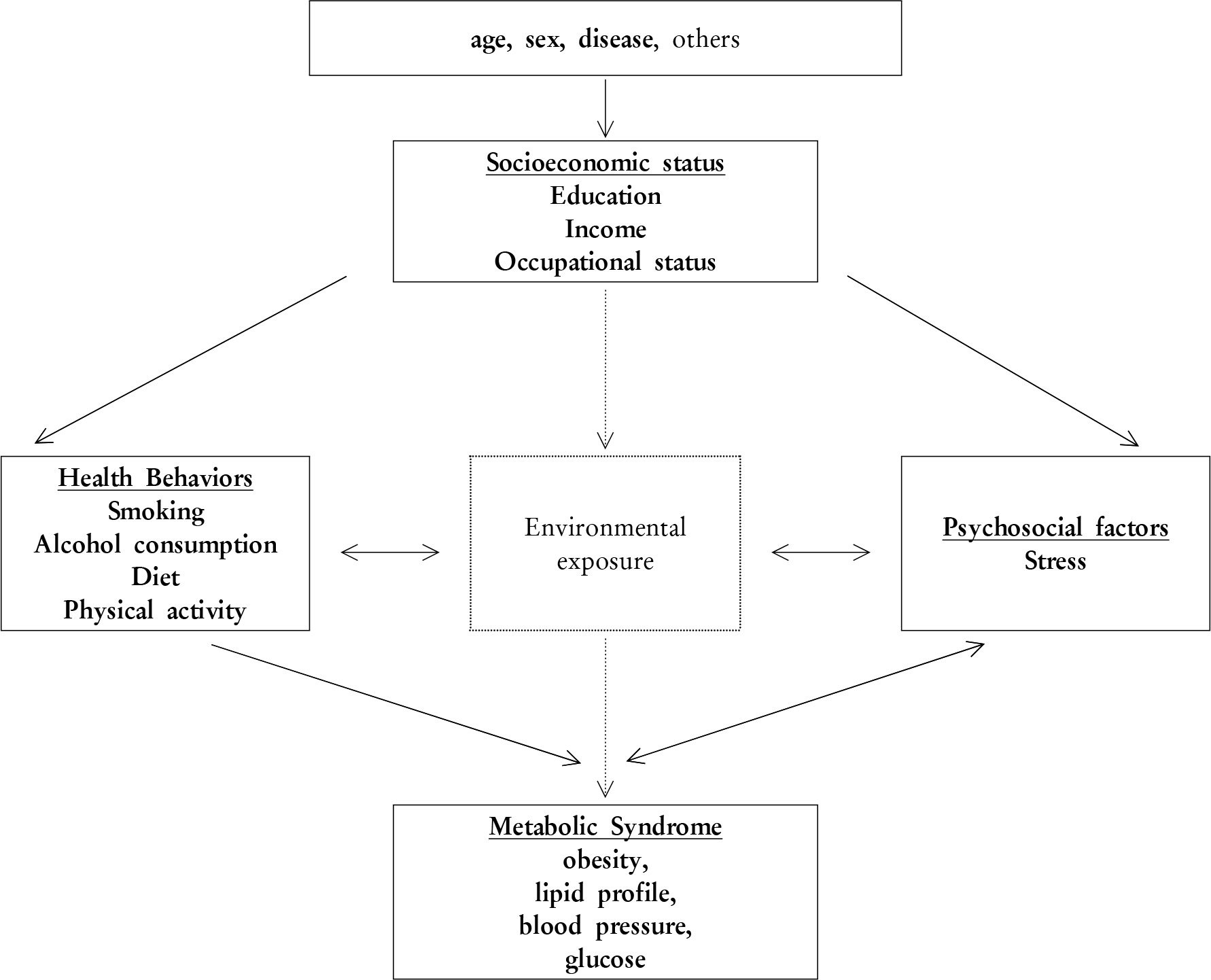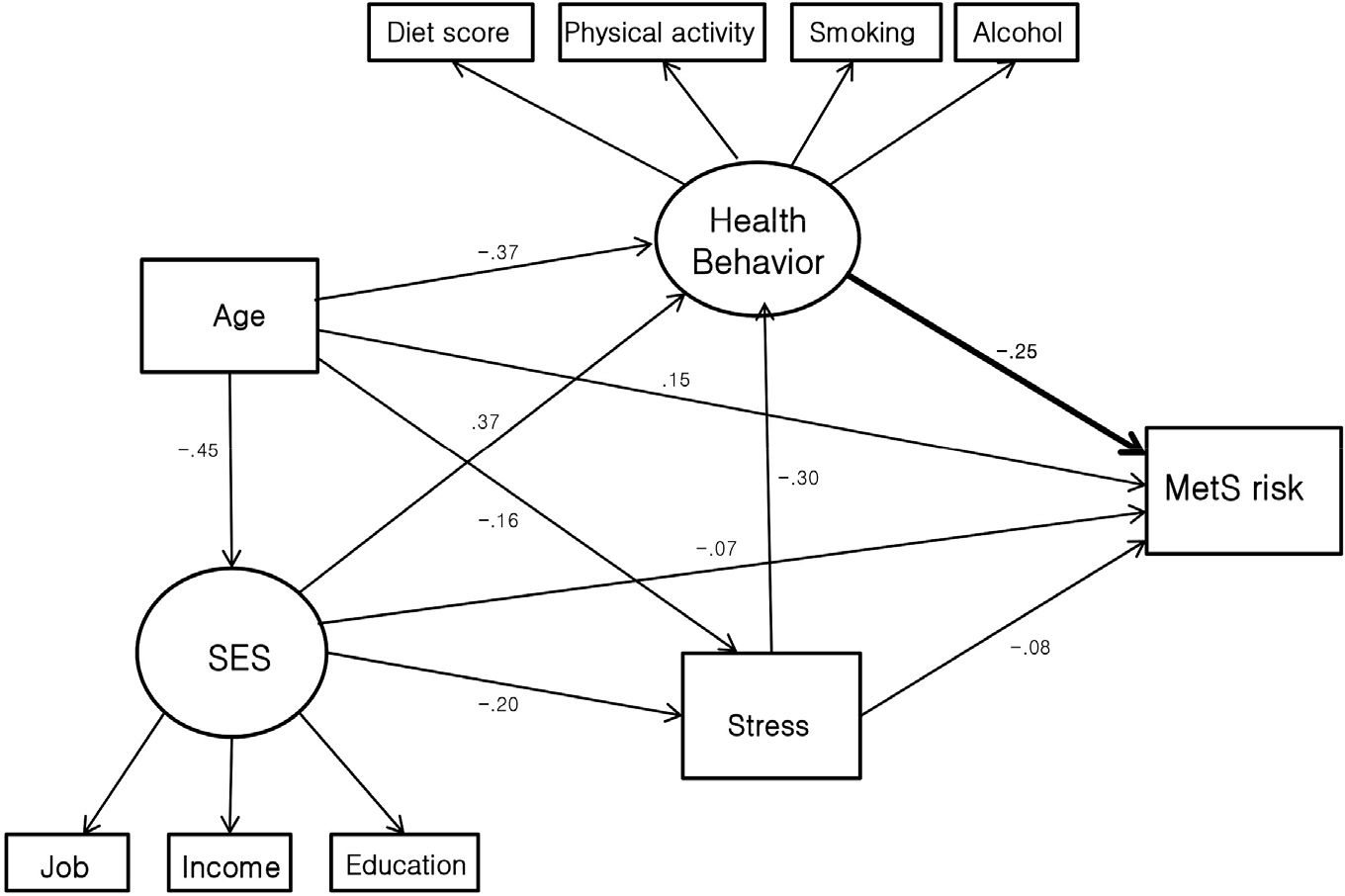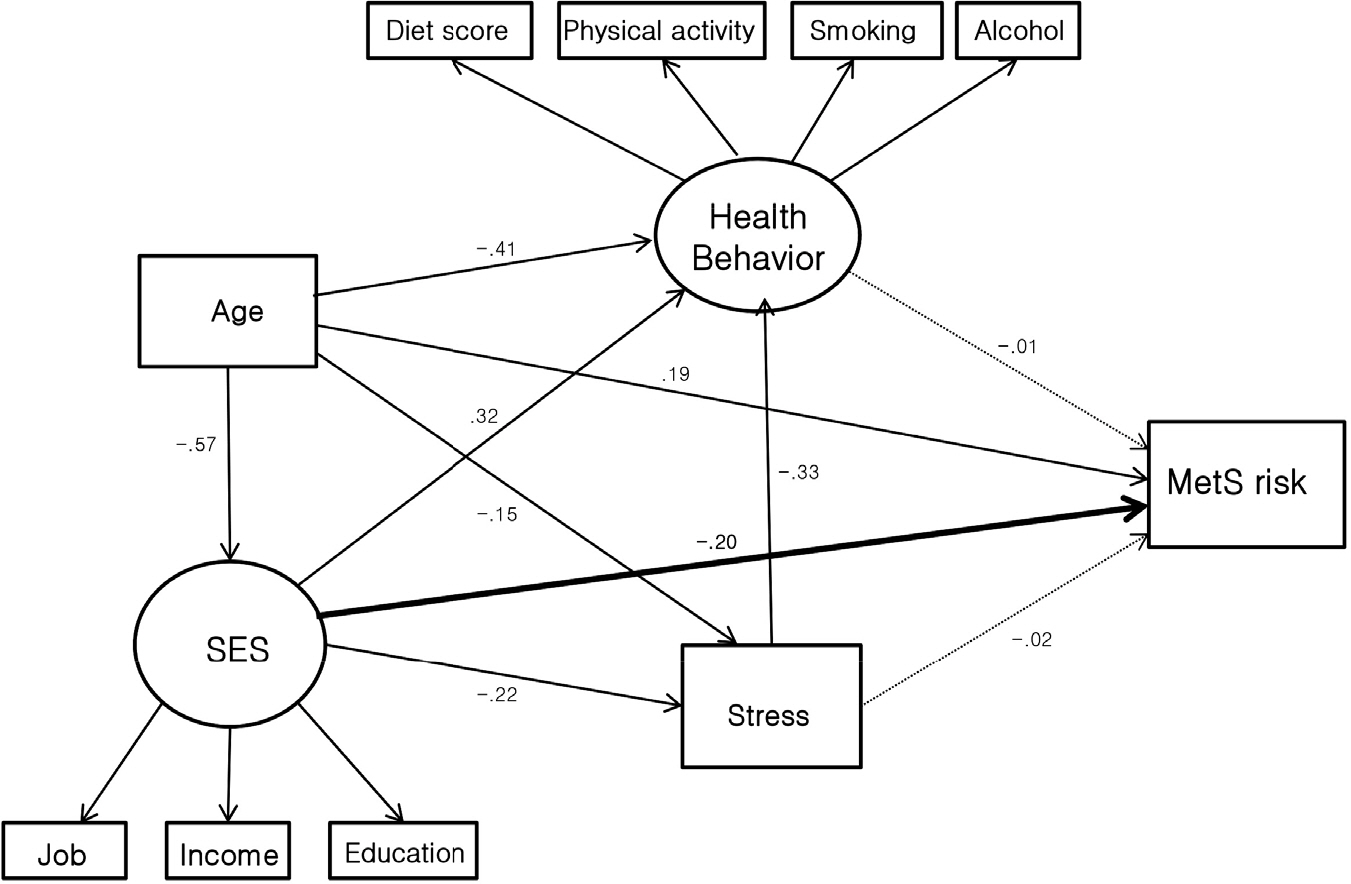The Relationship between Socioeconomic Status and Metabolic Syndrome, Using Structural Equation Modelling
Article information
Abstract
Background
This study aimed to investigate the complexity of the relationships between socioeconomic status, health behaviors, stress and risks of metabolic syndrome. By applying structural equational modelling, modified generalized conceptual model had described the associations and interactions among them.
Methods
24,210 participants (8,242 men, 15,968 women) registered with the Korean Health Examinee Cohort (KOEX) between 2004 to 2008. This study collected data on the socioeconomic status, health behaviors, and stress through individual interviews. Socioeconomic status (education, house income, occupation), health behaviors (diet, physical activity, smoking, alcohol consumption) and stress level were defined as exogenous factors. Endogenous variables were risks of metabolic syndrome based on modified National Cholesterol Education Program Adult Treatment Panel-lll (NCEP ATP-lll, 2006).
Results
According to model fitness test, these proposed model were acceptable in men, comparative fit in-dex=0.877, incremental fit Index=0.877, Tucker-Lewis index=0.757, root-mean-squared error associated=0.055. These were compatible also in women as comparative fit index=0.924, incremental fit index=0.924, Tucker-Lewis index=0.851, root-mean-squared error associated=0.050. There were sex difference related to risks of metabolic syndrome: in men socioeconomic status (β=-0.08), health behaviors (β=-0.25) and stress (β =-0.25) were relevant, but in women only socioeconomic status (β=-0.25) was relevant (P<0.05).
Conclusions
A conceptual model properly explains how Socioeconomic status may influence on health behaviors, stress, and risks of metabolic syndrome. Health behaviors in men and socioeconomic status in women had the strongest associations with risks of metabolic syndrome. In addition, socioeconomic status was strongly associated with health behaviors, stress and age.

Modified generalized conceptual model of potential pathway through which social status is linked to health.

Modified conceptual model; a summary of the interactions of Socioeconomic status (SES) influencing metabolic syndrome risk, in men Path coefficients are presented as standardised regression weight; dashed lines represent relationships that were non significant, model fitincluded in the exploratory analysis, but were non-significant. Model fit: X2=40.395, d.f=28, P<0.001, CFI=0.924, IFI=0.924 TLI=0.851, RMSEA=0.050.

Modified conceptual model; a summary of the interactions of Socioeconomic status (SES) influencing metabolic syndrome risk, in men path coefficients are presented as standardised regression weight; dashed lines represent relationships that were non significant, model fit included in the exploratory analysis, but were non-significant. Model fit: X2=35.843, d.f=28, P<0.001, CFI=0.877, IFI=0.877, TLI=0.757, RMSEA=0.055.

Comparison of metabolic syndrome and it's components, and prevalence of diabetes and cardiovascular disease according to gender

